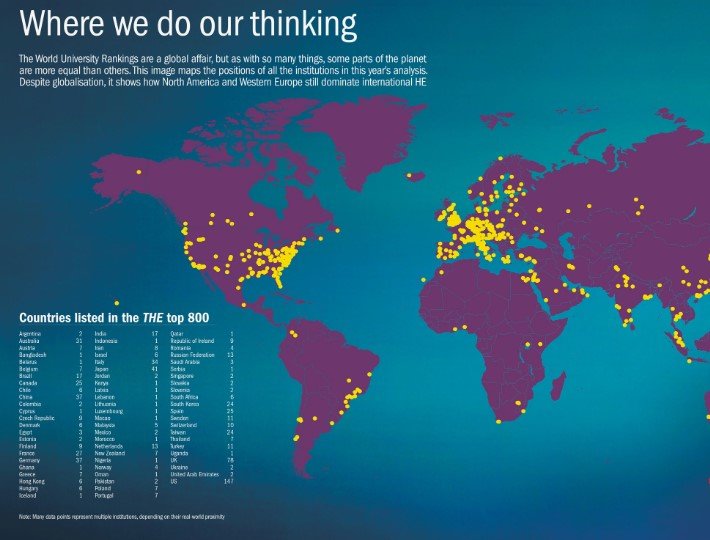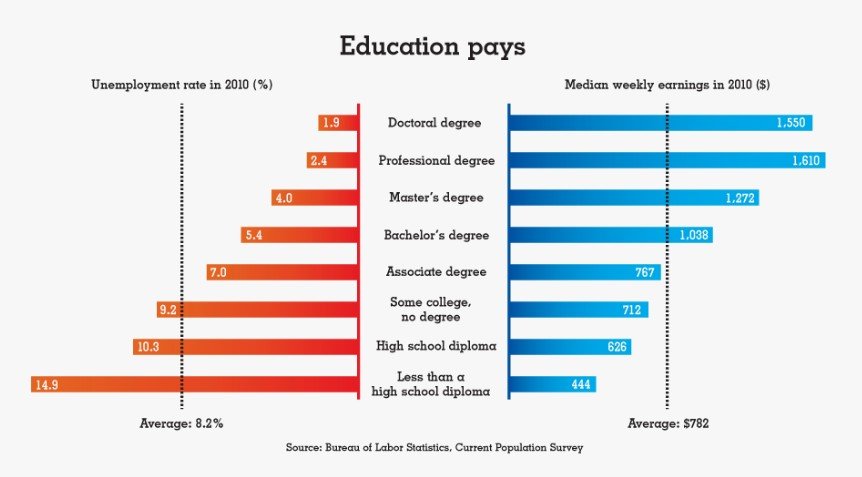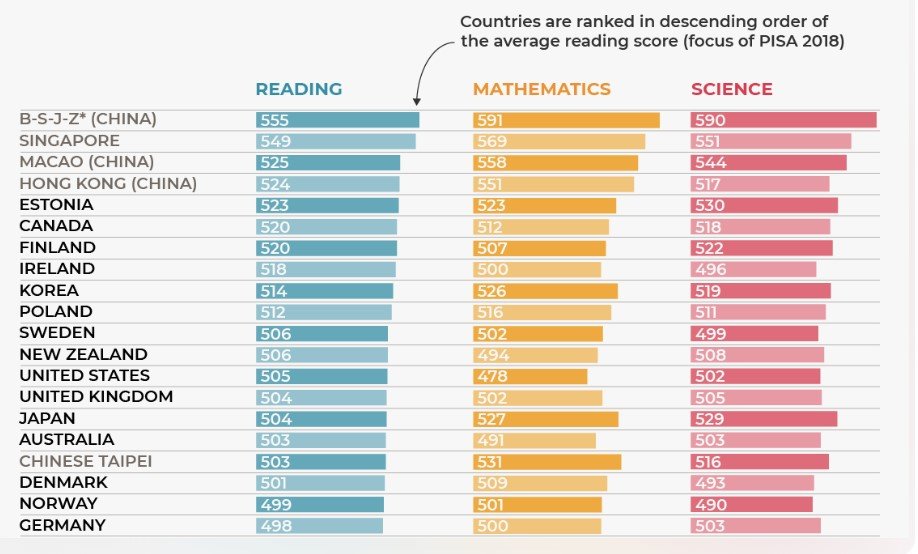The US education system ranks lower compared to many other countries worldwide. Despite its historical reputation, the US education system faces challenges in global rankings due to various factors such as funding disparities, standardized testing, and educational inequality.
As a result, the country has seen a decline in its standing among other nations in terms of educational outcomes and performance. The need for reforms and improvements in areas such as curriculum development, teacher training, and student support systems is crucial to enhancing the US education system’s competitiveness on a global scale.
By addressing these issues, the US can strive to reclaim its position as a leader in education and provide better opportunities for future generations.
US Education Rankings in The World

Table of Contents
Challenges in the US Education System
The US education system faces several challenges that impact its global rankings. These challenges include funding disparities, educational inequality, and overall performance compared to other countries.
Funding Disparities
The US education system is plagued by funding disparities, with significant differences in financial resources between affluent and low-income school districts. This results in unequal access to quality education, resources, and extracurricular activities, further exacerbating the educational divide.
Educational Inequality
Educational inequality in the US is a pressing issue, with disparities in academic achievement and opportunities among different socio-economic and racial groups. This inequality hampers the overall performance of the education system and impacts the country’s standing in global education rankings.
World Education Rankings List By Country 2024
In the 2024 world education rankings list by country, the US faces the challenge of improving its position amid increasing competition from other nations. The rankings highlight the need for comprehensive reforms and targeted interventions to enhance the country’s educational standing on the global stage.
Factors Affecting Our Education Rankings
The US education system’s ranking in the world is influenced by several key factors. These factors play a crucial role in determining the overall performance and standing of US education in global rankings.
Standardized Testing
Standardized testing is a significant factor influencing the US education rankings in the world by year. The performance of students in standardized tests such as the SAT, ACT, and PISA directly impacts the overall assessment of the education system. Consistent performance in these tests is vital for the US to maintain a competitive position in global education rankings.
Teacher Quality
The quality of teachers also plays a pivotal role in the K–12 education rankings by state. Highly qualified and experienced teachers contribute to a better learning environment, which reflects positively on the overall education rankings. The effectiveness of teachers in imparting knowledge and fostering critical thinking skills greatly influences the performance of students in various assessments.
Access To Quality Education
Access to quality education is another crucial aspect affecting US education rankings in the world. Disparities in access to resources, educational facilities, and equitable opportunities for students across different regions can impact the overall performance of the education system. Ensuring equal access to quality education for all students is essential for improving the standing of US education in global rankings.

Comparison With Other Countries
The education system in the United States is often compared to that of other countries to gauge its global standing. Let’s delve into the comparison with other nations, focusing on PISA rankings, graduation rates, and STEM education.
Pisa Rankings
The Programme for International Student Assessment (PISA) evaluates the performance of 15-year-old students in reading, mathematics, and science. The latest PISA rankings reveal that the United States lags behind several developed nations, raising concerns about its educational competitiveness.
Graduation Rates
When it comes to graduation rates, the United States faces challenges in ensuring a high percentage of students complete their education. Comparatively lower graduation rates in the U.S. have led to discussions about reforms aimed at enhancing academic achievement and completion rates.
Stem Education
STEM (Science, Technology, Engineering, and Mathematics) education is crucial for fostering innovation and technological advancement. In comparison with other countries, the United States has recognized the need to strengthen its focus on STEM education to maintain its global competitiveness in these critical fields.
Initiatives For Improvement
The US education system is striving to improve its global rankings through various initiatives. Efforts are being made to enhance academic performance and strengthen the overall quality of education to compete more effectively on the international stage. These initiatives aim to elevate the nation’s standing in global education rankings and foster a more competitive and successful learning environment.
Educational Reforms
The education system in the United States has been a topic of discussion for many years. The rankings of US education in the world have been disappointing in recent years, but initiatives are being taken to improve it. One of these initiatives is educational reforms. The reforms aim to improve the quality of education by implementing new teaching methods and curriculum changes. The introduction of the Common Core State Standards is one such reform that aims to ensure that students across the country are learning the same skills and knowledge at each grade level. The reforms also aim to reduce the achievement gap between different groups of students.
Investment In Education Technology
Another initiative to improve the US education system is investing in education technology. Technology has the potential to transform the way students learn and teachers teach. It can make learning more interactive, engaging, and personalized. Investment in education technology can provide students with access to online resources, virtual classrooms, and educational apps. It can also help teachers track student progress, provide individualized feedback, and plan lessons more effectively. The use of technology in education can help to bridge the gap between traditional teaching methods and the digital age. In conclusion, initiatives like educational reforms and investment in education technology are crucial to improving the US education system. These initiatives aim to provide students with a high-quality education, reduce the achievement gap, and prepare them for success in the digital age. By continuing to invest in education, the United States can move up the rankings in world education and provide its students with the best possible start in life.
Role Of Government Policies
The education system in the US has been under scrutiny for years. U.S. education rankings since 1960 have shown a decline in the quality of education compared to other countries. According to the latest report, the US has ranked 18th out of 24 countries in overall education quality. The US has also been ranked 38th in math and 24th in science among the world’s top-performing countries. The worst education system in the world is a title that the US is desperately trying to avoid.
Education Funding Policies
The role of government policies in education is significant, and the education funding policy is a crucial aspect. The US government spends approximately $700 billion on education, which is about 4% of the GDP. However, the distribution of funds is not equal across all states, and some schools receive more funding than others. This results in a significant disparity in the quality of education provided to students. Poorly funded schools struggle to provide adequate resources and facilities to students, leading to a subpar education experience.
Curriculum Standards
Curriculum standards play a vital role in shaping the education system in the US. The Common Core State Standards initiative was introduced in 2009 to provide a consistent set of standards across all states. However, the initiative has faced criticism from some states that argue that it takes away local control over education. The US education system lacks a standardized curriculum, which results in uneven academic standards across different states. This makes it difficult to compare the performance of students across the country.
The role of government policies in education is significant, and funding policies and curriculum standards are crucial aspects that determine the quality of education provided to students. The US education system needs to address the issues of funding disparity and lack of standardized curriculum to improve its education rankings in the world.
Impact On Global Competitiveness
The rankings of US education in the world have a significant impact on global competitiveness. The performance of a country’s education system directly influences its ability to compete in the global economy, drive innovation, and foster research and development.
Economic Implications
The education rankings of the US play a crucial role in determining its economic competitiveness on the global stage. A strong education system is vital for producing a skilled workforce, which in turn drives economic growth and innovation. Investing in education is essential for ensuring the future prosperity and competitiveness of the nation.
Innovation And Research
The education rankings also affect the country’s capacity for innovation and research. A robust education system fosters a culture of creativity and critical thinking, laying the foundation for groundbreaking research and technological advancements. Nurturing talent through quality education is paramount for driving innovation and securing a competitive edge in the global arena.
Future Outlook
The future of US education rankings in the world is crucial for shaping the global landscape of education. As the world becomes increasingly interconnected, the performance of the US education system will continue to have a significant impact on the country’s competitiveness and its ability to prepare future generations for success in a rapidly changing world.
Trends In Education
One of the key trends in US education rankings is the growing emphasis on holistic and personalized learning approaches. Educational institutions are increasingly recognizing the importance of catering to individual learning styles and providing diverse educational experiences to meet the needs of a diverse student population.
Moreover, the integration of technology in education has been gaining momentum. With the rise of online learning platforms and digital resources, the future of education is likely to be characterized by a blend of traditional classroom instruction and innovative digital learning tools.

International Collaboration
International collaboration is set to play a pivotal role in shaping the future of US education rankings. As the world becomes more interconnected, educational institutions are recognizing the value of global partnerships and exchange programs to foster cross-cultural understanding and enhance the quality of education.
Furthermore, the exchange of best practices and knowledge sharing with educational counterparts in other countries will be crucial in driving innovation and improving the overall quality of education in the US.
Frequently Asked Questions
Where does our education rank in the world?
The US education system ranks average compared to other countries in the world.
How does our education compare to other countries?
US education ranks lower compared to other countries in the world due to declining academic performance.
When was the US ranked #1 in education?
The US was ranked #1 in education in 2020.
Where do we rank in the world?
The US ranks in the top 20 for education globally, according to recent rankings.
Conclusion
The US education rankings reveal areas for improvement to ensure global competitiveness. Understanding comparative data is crucial for progress. By addressing challenges, the US can enhance its education system and empower future generations. Let’s strive for excellence together.

